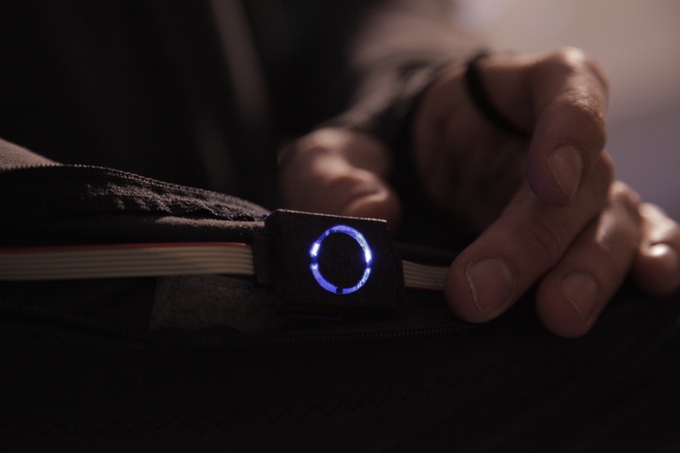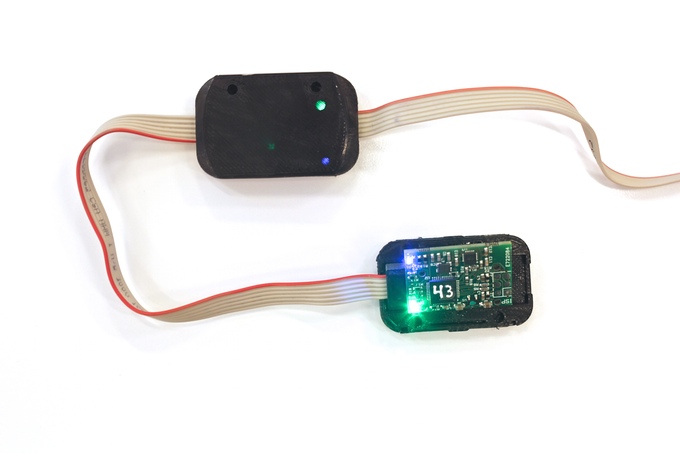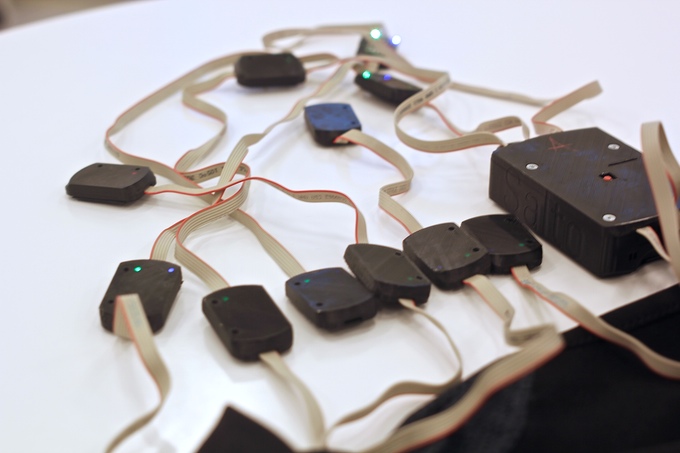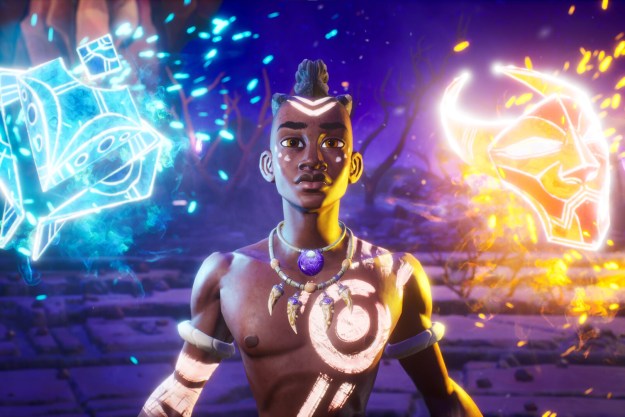Each DK1 suit has 19 sensors strategically placed to capture joint movement. The gloves have seven each, for a total of 33. The sensors hide a nine axis gyroscope, accelerometers, and magnetometers to measure rotation, orientation and acceleration, and are wired to each other and to a hub device. You can power the hub with your own USB power bank. The hub (also on the suit) communicates via Wi-Fi or USB with your computer.
Salto Studio, the desktop manager planned to accompany DK1 suits, lets you record and play back your actions as well as stream and export motion capture data in BVH or FBX format, two industry standards. Salto works with Unity, the Unreal Engine, Oculus, Samsung Gear VR, Autodesk Maya, and Motionbuilder so far. Rokoko plans to create an SDK and additional plugins, and those with the know-how can create their own applications with C++, C#, Java, and Python.
This setup is essentially a motion capture studio at a fraction of the cost. Instead of relying on optical systems that need multiple cameras and an enclosed environment, the Salto system maps the sensor movement directly.
The applications here are broad. While working together at the National Film school of Denmark, the Rokoko team wanted to make live animation theater featuring actors behind the scenes controlling live animated characters. Today it’s called “animotion,” and they want to bring that technology to the rest of us. However, entertainment is just the beginning.
Yes, you can animate your own characters in real-time, but you can also track movement for fitness or sports training. Want to get a perfect golf swing? This can track your form. Mocap is just as useful in medical analysis for things like prosthesis adjustment, tracking hip replacement migration, and post-stroke alignment and rehab. Rokoko is in the midst of a research project applying this tech to help children with autism spectrum disorders, PLAI (Psychiatric Live Animotion Intervention).
There are working prototypes of the Salto suit in use, but a lot of the Salto kit, like Salto Studio, is still in the works. The wired connections for the sensors are still in development too, so the pictures are of 3D printed prototypes. The Rokoko team plans to deliver to backers by April if they hit their $100,000 funding goal. Before delivery, they have to finalize the design of the sensors, hub, Salto Studio and the SDK.
If you think that sounds like a lot of work, you’re right. But the question is, do we think the Salto DK1 suit feasible to deliver at all? The answer is yes; they’re already using it. Do we think they’ll deliver exactly on time? Probably not.
The truth is, there’s still a lot to do – add to the above finalizing the suit itself so that it can fit under clothes, and any other tasks that come with stretch goals. A “Monstrous VR game” is the $200,000, or first-tier stretch goal, and that seems a bit unrealistic to deliver with the first suits, the SDK and the Studio, assuming those arrive on time. Creating a full game with any degree of quality in six months is likely a folly. However, crowdfunded projects are lauded for their innovation, not their punctuality.
This is some pretty cool tech, and an investment worth waiting for. If you don’t mind investing and waiting, you could grab a Salto DK1 suit with gloves for as little as $730. If you don’t mind going without the gloves, the super early bird cost for a suit is $550. Check it out for yourself before the campaign ends October 22.





